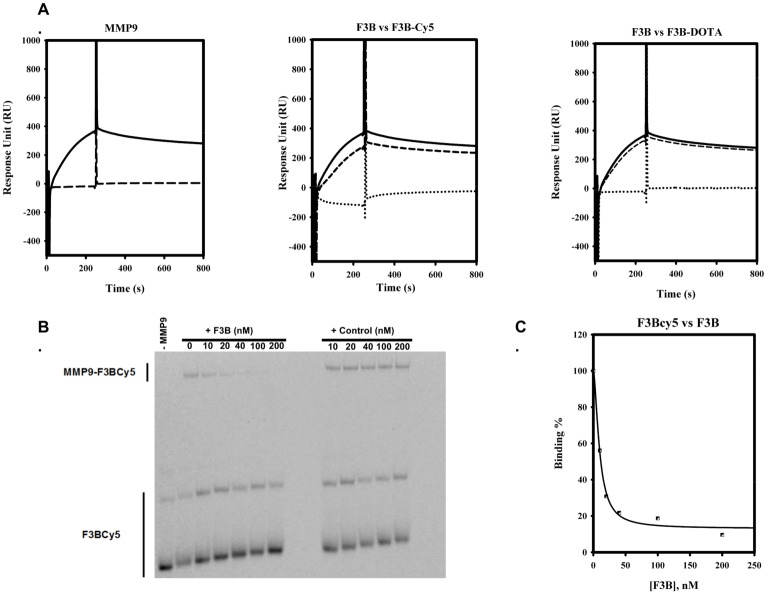Fig 1.
A. Surface Plasmon Resonance assay. Left Panel. MMP-9 (50 nM) was injected at 20 μL/mn on F3B-immobilized channel (solid line) or Control-immobilized channel (dashed lines). MMP-9 forms a complex only in presence of immobilized F3B. Central and right panels: MMP-9 (50 nM) was injected on F3B-immobilized channel at 20 μL/mn alone (solid lines) or after pre-incubation with control conjugates (200 nM, dashed lines) or F3B conjugates (200 nM, dot lines). Pre-incubation with control conjugates (central panel: Cy5, right panel: DOTA) did not abolish complex formation. Whereas pre-incubation with F3B conjugates (central panel: Cy5, right panel: DOTA) led to complex abolition. B. Electrophoretic Mobility Shift Assay. The preformed F3B-Cy5-MMP9 complex was allowed to compete with increasing concentration of competitor (F3B or control). The incubation with F3B competitor led to disappearance of F3B-Cy5-MMP9 shift band whereas incubation with the control did not abolish the F3BCy5-MMP9 complex formation. C. Electrophoretic Mobility Shift Assay. Binding curve of F3B for MMP9, as an integration of F3B-Cy5-MMP9 band intensity. A KD of 15 μM was gathered from the curve.

